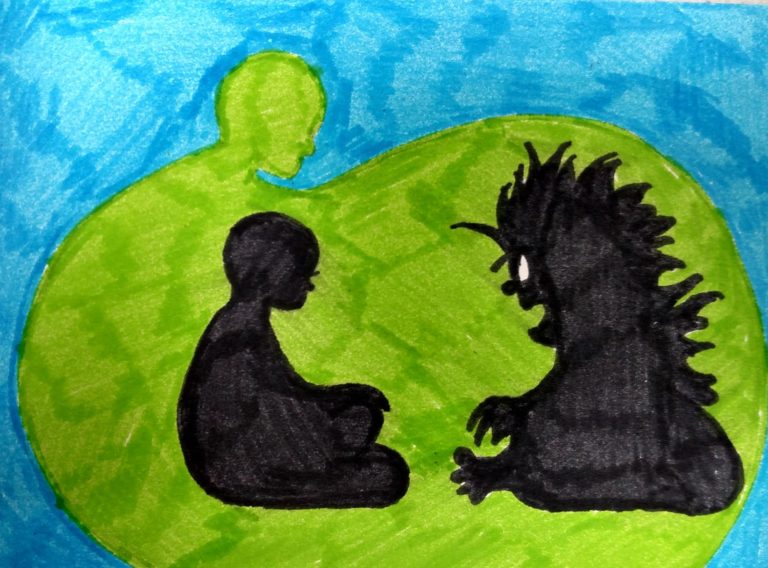What is Trauma?
Trauma is a broad term that generally encompasses an individual’s capacity to experience control over or integrate the impact of an extremely emotional or physically damaging event in their current everyday life. When people typically think of trauma, they think of large “T” traumas – significant and deeply disturbing events (such as acts of terrorism, war, natural disasters, sexual assault) because the impact of such events is more readily understood. While these types of events are arguably some of the most deeply traumatic, less obvious but still distressing events, or small “t” traumas (such as divorce, loss, conflict, legal trouble, relocation) can still impact us in profoundly traumatic ways.
Does Every Trauma Result in PTSD?
Hope for Healing
Whether trauma comes in the form of multiple small “t” or one large “T” trauma, the impact doesn’t have to result in long term suffering. Trauma effects the part of our brain responsible for language, shutting it down and causing the memory of the event to be recorded both visually and in the body as sensations. There are many trauma-focused treatment approaches shown to significantly reduce or eliminate trauma responses and symptoms of PTSD, therefore lessening distress and increasing quality of life. Each treatment is different in its approach and strategies – I encourage you to investigate all options in order to find the right one for you. This post explores how, when used in tandem, trauma-focused IFS therapy and art therapy can facilitate profound and effective healing from trauma.
The Therapeutic Relationship
There are plenty of resources and workbooks touting ways to heal yourself from the impact of trauma. They are sometimes based on sound research and might even integrate some of the theory and techniques described here or used by the most experienced of trauma therapists. While these can be helpful for some individuals in some cases, in my experience, recovery from trauma does not come from a prescriptive formula applied across the board. Each person’s traumatic experience, how they process the event, and their resulting symptoms are unique to that individual. Work with a trauma therapist who gets to know YOU in a safe and trusting therapeutic relationship is an essential component for the process of effective healing.
How Art Therapy Helps Process Trauma
Because traumatic memories are recorded as images and physical sensations, art therapy can be of particular benefit when verbal processing is simply not possible. It allows a person who has experienced trauma to access these non-verbal traumatic memories, engaging both hemispheres of the brain and creating a pathway for visual and narrative expression. How all this precisely works is not entirely clear. Through evolving objective, scientific research in art therapy and neuroscience, we’re beginning to understand how art making works with the brain and helps facilitate resiliency and healing post-trauma.
Through subjective data and experience, art therapy has proven effective in treating trauma with youth and adults. Most recognize that for children, who may not have the vocabulary for what happened or have been threatened not to tell, art allows for a developmentally normative and safe way to share their experience. However, by tapping into our innate creativity and allowing choice in expression, traumatic memories held by adults can be externalized through art making as well, allowing both a sense of empowerment over what is being expressed, at what pace, and distancing between the person and the content being visually depicted. This allows these memories to be less overwhelming and for effective engagement with difficult material without re-traumatization for individuals of all ages.
This does not mean that words are not involved – on the contrary, they are essential. While art making on your own may be beneficial and therapeutic for well-being or emotional healing, an art therapist can support you by adding verbal narrative and context to art made in a therapeutic relationship. In this way, art making is not simply a coping strategy to help us feel better. The verbal processing of traumatic memory facilitated in art therapy allows it to be experienced as a narrative memory – instead of a visual and physical memory – lessening the intensity and reducing the trauma symptoms.
Trauma-Focused IFS Therapy
Different from traditional trauma therapies that emphasize development of coping strategies and building resources before processing traumatic memories, the treatment of trauma using IFS involves welcoming the extreme symptoms from the onset. Through scientific research on its effectiveness at treating even the most complex trauma, IFS has proven to be a powerful approach that can accelerate healing and provide lasting relief in a shorter period of time. In order to help individuals experiencing trauma heal, therapists trained in this evidenced-based approach understand and work with the parts or subpersonalities deep within, beyond the reach of traditional trauma therapy models.
We all have an internal system of many different parts that don’t appear when trauma occurs but have always been there. Traumatic experiences can reorganize this internal system, forcing these parts out of their valuable roles, resulting in the behaviors, thoughts, feelings and physical symptoms associated with trauma that we seek to eliminate. Parts carrying the burden of the trauma become exiled while other parts take on extreme protective roles preventing access to these exiled parts and the associated traumatic pain. IFS therapists understand there are no bad parts and rather than seeking to eliminate them, seek to understand them – why they do what they do – and help them find their non-extreme roles so they no longer cause us to struggle with the symptoms of trauma.
Because individuals are often uncomfortable or unable to verbally process trauma, by learning about the positive intentions of the individual’s protectors and obtaining their permission to access the traumatic wounds of the exiles, IFS reduces the fear, shame and self-criticism that might get in the way. An IFS therapist spends time appreciating and getting to know these protective parts without an agenda to push them out of the way and going directly to the trauma before they are ready, giving them permission to set the pace so that the fear of “flooding” does not take over. By establishing a Self-to-part relationship, our protective parts can begin to trust the Self to take the lead and access their non-extreme roles, allowing for unburdening of the exiles and healing from trauma in a transformative and powerful way.
Combining Art Therapy and IFS Parts Work
While IFS provides a process to work with both the protective parts as well as the vulnerable exiled parts that carry the burden of traumatic experiences and the related painful emotions, art therapy can provide a means to externalize these parts, give them a voice, provide distancing to empower them not to overwhelm the individual, and lay the groundwork for the unburdening process. For trauma survivors, art therapy can allow access to their internal world more readily than verbal communication in a safe and welcoming space in the presence of a trained clinician. This can feel empowering and allow for an open-hearted connection between Self and protective parts.
Visually depicting these parts can assist in developing a relationship with and extending Self-led compassion to the protective parts so that they are more readily able to step back, or unblend, and allow access to the traumatic memory. Art therapy assists with this process of unblending allowing these extreme parts to develop new patterns of responses and can then facilitate the process of unburdening the trauma carried by the exile.
When an individual is in Self energy, its attributes – calmness, curiosity, clarity, compassion, confidence, creativity, courage, and connectedness – allow for this healing and restorative process to occur. When art making is involved, not only is it tapping into the Self’s attribute of creativity but also the neurological underpinnings research is finding art-making allows for in processing trauma. The Self-led quality of creativity facilitates the process of unblending and unburdening, essential for healing using the apparent neurological benefit art therapy provides.
An Enhanced Approach for Healing
It is possible to heal from trauma and the resulting emotional and psychological pain. Research tells us the brain changes in response to trauma, and while there is no quick fix or cure that works for everyone, art therapy and IFS have proven effective in processing trauma and can enhance the effectiveness of each other when combined. Art therapy can give voice to the pain carried by parts allowing for the process of unblending. This in turn helps give access to the qualities of Self-energy needed for the process of unburdening exiled parts from the traumatic hurt they carry and transform them into new roles. Therapeutic work with a trained clinician in a safe and trusting relationship combining art therapy and trauma-focused IFS treatment can truly offer transformative healing from trauma.


